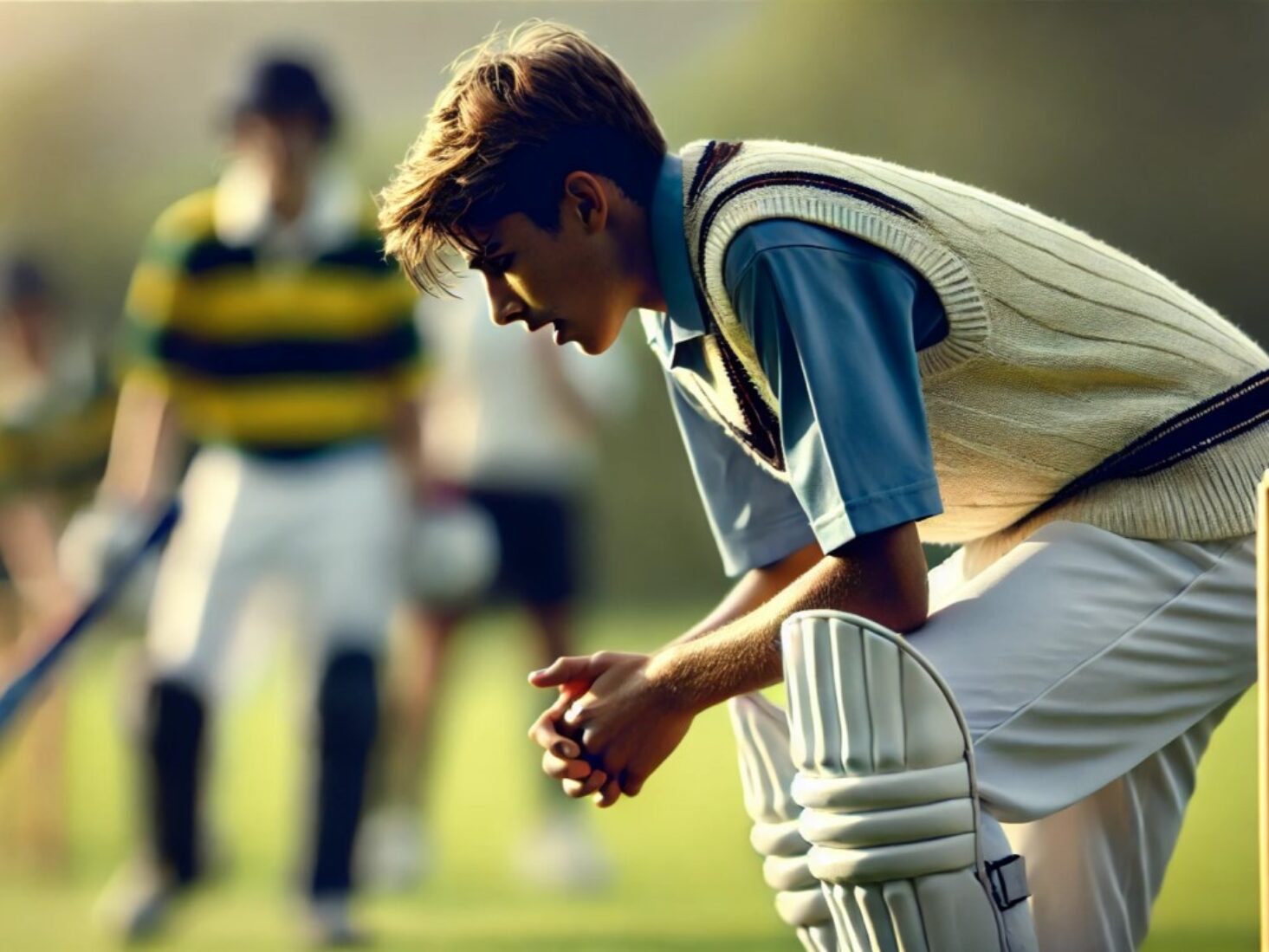
The Role of Cricket in Promoting Physical Education
Cricket has become a powerful tool in promoting physical education across schools and communities worldwide. The role of cricket in promoting physical education is evident through its ability to engage students in both physical and mental challenges. By incorporating cricket into school curricula, educators can foster an environment where students not only develop physical skills but also learn the importance of teamwork, strategy, and inclusivity. This makes cricket an excellent choice for a comprehensive physical education program.
Cricket’s contribution to physical education is multifaceted. From understanding the rules and scoring to practicing skills and drills, students are constantly engaged in activities that enhance their physical fitness and cognitive abilities. The sport’s structured format and emphasis on discipline make it ideal for teaching students the value of dedication and perseverance.
Furthermore, cricket’s adaptability to different environments and age groups is another reason why it plays such a significant role in physical education. Programs designed to develop skills progression across different age groups ensure that students at various developmental stages can participate and benefit from the sport. This adaptability makes cricket a versatile component of any physical education curriculum.
The emphasis on inclusivity within cricket also contributes to its effectiveness in promoting physical education. By focusing on inclusivity and diversity, cricket programs can reach a broader audience, ensuring that all students, regardless of background or ability, can engage with the sport. This inclusive approach not only promotes physical activity but also fosters a sense of community and belonging among participants.
Moreover, the mental benefits of playing cricket cannot be overlooked. The game requires players to remain focused, develop strategies, and work as a team, which helps in building mental discipline and resilience. These skills are crucial in a well-rounded physical education program, where the goal is not only to improve physical health but also to support the mental and emotional well-being of students.
The role of cricket in promoting physical education is significant and multifaceted. By integrating cricket into physical education programs, schools can offer a holistic approach to fitness and education, preparing students not just for sports but for life. Cricket’s unique combination of physical, mental, and social benefits makes it an indispensable part of modern physical education.
Cricket as a Comprehensive Fitness Activity in Physical Education

Cricket, with its diverse range of physical demands, is an excellent sport for promoting comprehensive fitness in physical education. Unlike many sports that focus on specific aspects of physical fitness, cricket offers a well-rounded workout, engaging various muscle groups and enhancing overall cardiovascular health. The game’s blend of sprinting, agility, endurance, and hand-eye coordination makes it an ideal activity for developing students’ physical capabilities in a holistic manner.
One of the key benefits of incorporating cricket into physical education programs is its ability to improve cardiovascular fitness. The game requires players to sprint between the wickets, chase balls in the field, and maintain endurance over extended periods, all of which contribute to a healthier heart and lungs. This cardiovascular workout is essential for young students as it helps build stamina and reduces the risk of heart disease later in life.
Cricket also enhances muscular strength and endurance, particularly in the arms, legs, and core. Batting involves powerful strokes that engage the upper body, while bowling requires strength and coordination in the arms and shoulders. Fielding, on the other hand, demands quick sprints, jumps, and dives, all of which build leg strength and agility. These activities not only improve muscular fitness but also contribute to better posture, balance, and overall physical resilience.
Flexibility is another area where cricket excels as a fitness activity. The sport requires players to perform a wide range of movements, from the twisting and turning needed in bowling and batting to the quick directional changes in fielding. These movements help to increase joint flexibility and reduce the risk of injuries, which is particularly important for growing bodies in the educational setting.
Moreover, cricket promotes the development of motor skills and coordination. The sport’s emphasis on hand-eye coordination is evident in both batting and fielding, where precise timing and accurate movements are crucial for success. These skills are transferable to other sports and physical activities, making cricket a valuable addition to any physical education curriculum.
Incorporating cricket into physical education programs also has psychological benefits. The sport’s physical demands help to release endorphins, which reduce stress and improve mood. This mental boost can enhance students’ overall well-being, making them more focused and motivated in both their academic and physical pursuits.
In summary, cricket is a comprehensive fitness activity that promotes cardiovascular health, muscular strength, flexibility, and motor skills development. By incorporating cricket into physical education, educators can provide students with a well-rounded physical workout that benefits their overall health and fitness.
Enhancing Teamwork and Social Skills Through Cricket in Schools
Cricket is not just a game of individual skills; it’s a team sport that significantly enhances teamwork and social skills among students. In a physical education context, cricket offers numerous opportunities for students to learn the value of working together, communicating effectively, and supporting one another, all of which are crucial life skills that extend beyond the playing field.
One of the most important aspects of cricket is its reliance on teamwork. The sport requires players to work together strategically to achieve common goals, such as scoring runs, taking wickets, or defending a total. This collaborative effort fosters a sense of unity and collective responsibility among team members. In a school setting, where students are still developing their social identities, cricket provides a structured environment in which they can learn to trust and rely on their peers.
Communication is another critical skill that cricket helps to develop. On the field, players must constantly communicate with each other, whether it’s coordinating field placements, calling for a run, or strategizing between overs. This necessity for clear and effective communication encourages students to express themselves confidently and listen to others, enhancing their interpersonal skills. These communication skills are essential not only in sports but also in academic and social contexts, where clear and respectful dialogue is key to success.
Cricket also teaches students the importance of roles and responsibilities within a team. Each player in a cricket team has a specific role, whether it’s as a batsman, bowler, or fielder, and the success of the team depends on everyone fulfilling their role to the best of their ability. This understanding of roles helps students appreciate the value of diversity within a team, recognizing that everyone’s contribution is vital to achieving success. This lesson in teamwork and collaboration is invaluable in preparing students for future group work, whether in the classroom, the workplace, or other social settings.
Furthermore, cricket encourages students to develop empathy and sportsmanship. The sport’s emphasis on fair play and respect for opponents teaches students to value ethical behavior, even in competitive situations. Celebrating the achievements of others, acknowledging good play by opponents, and handling both victory and defeat with grace are all part of the cricketing ethos. These values help students to develop a strong moral compass and foster positive relationships with others.
In conclusion, cricket is a powerful tool for enhancing teamwork and social skills in physical education. By participating in cricket, students learn to communicate effectively, collaborate with others, and develop empathy and sportsmanship, all of which are essential skills for personal and social development.
Developing Motor Skills and Coordination Through Cricket

Cricket plays a significant role in the development of motor skills and coordination, making it an invaluable component of physical education. The sport’s varied demands on movement and precision help students refine their fine and gross motor skills, which are essential for their overall physical development and can be applied to a wide range of activities both within and beyond sports.
One of the primary ways cricket enhances motor skills is through its emphasis on hand-eye coordination. Whether batting, bowling, or fielding, players must constantly synchronize their hand movements with visual stimuli to perform effectively. Batting, for instance, requires players to time their swings accurately to hit the ball, a task that demands precise coordination between the eyes, hands, and body. Similarly, bowlers must coordinate their arm movements with their footwork to deliver the ball accurately and consistently. These activities help students develop the fine motor skills needed for precise and controlled movements.
Cricket also contributes to the development of gross motor skills, which involve larger body movements and are crucial for overall physical competence. Running between the wickets, chasing down balls in the field, and executing dives or jumps to stop a boundary all engage the major muscle groups and improve coordination, balance, and agility. These activities not only enhance students’ athletic abilities but also improve their overall physical fitness, making them more capable in various physical tasks.
Another important aspect of motor skills development in cricket is the role of reflexes and reaction time. The fast-paced nature of the game requires players to react quickly to the ball’s movements, whether it’s a fast delivery from a bowler or a sudden change in direction when fielding. These quick reflexes are honed through practice and play, helping students to become more responsive and agile in their movements. This improvement in reaction time is beneficial not only in cricket but also in other sports and physical activities that require quick thinking and swift action.
Moreover, cricket promotes the development of bilateral coordination, which is the ability to use both sides of the body in a coordinated manner. For example, a right-handed batsman must use their left hand to guide the bat, while a bowler must coordinate their arm and leg movements to deliver the ball effectively. This bilateral coordination is crucial for overall physical development, as it enhances the ability to perform complex movements and tasks that require the use of both sides of the body.
In summary, cricket is an effective sport for developing motor skills and coordination in physical education. By engaging in activities that require hand-eye coordination, gross motor skills, reflexes, and bilateral coordination, students can improve their physical abilities and apply these skills to a wide range of sports and everyday activities.
Promoting Lifelong Physical Activity Through Cricket
Cricket plays a significant role in promoting lifelong physical activity, making it an essential component of physical education. By introducing students to cricket at an early age, educators can instill a love for the sport that encourages continued participation in physical activities throughout their lives. Cricket’s combination of physical, social, and psychological benefits makes it an ideal sport for fostering a lifelong commitment to health and fitness.
One of the key ways cricket promotes lifelong physical activity is by providing a positive and enjoyable experience in physical education. When students find a sport that they enjoy and feel confident in, they are more likely to continue participating in physical activities outside of school and into adulthood. Cricket’s inclusive nature, where players of all skill levels can contribute to the game, helps to build students’ confidence and enjoyment, making them more likely to engage in the sport regularly.
Cricket also offers a range of physical health benefits that encourage long-term participation. The sport’s demands on cardiovascular fitness, muscular strength, flexibility, and coordination provide a comprehensive workout that contributes to overall health and well-being. Regular participation in cricket can help students develop healthy exercise habits, reducing the risk of chronic diseases such as obesity, heart disease, and diabetes. By fostering these habits in school, physical education programs can play a crucial role in promoting lifelong health and fitness.
Another important aspect of cricket’s role in promoting lifelong physical activity is its emphasis on social interaction and teamwork. The camaraderie and friendships developed through playing cricket can motivate students to continue participating in the sport as they grow older. Whether through joining a local club, participating in social leagues, or simply playing informal games with friends, the social aspect of cricket can be a powerful incentive for maintaining an active lifestyle. These social connections also contribute to mental well-being, as regular physical activity combined with positive social interactions can help reduce stress, anxiety, and depression.
Cricket’s adaptability also makes it an ideal sport for promoting lifelong physical activity. The game can be played in various formats, from the traditional full-length matches to shorter forms like Twenty20 and even casual backyard cricket. This flexibility allows individuals to continue playing the sport in a way that fits their lifestyle and preferences, whether they have time for a full match or just a quick game with friends. The accessibility of cricket in different settings ensures that individuals can remain active throughout their lives, regardless of their circumstances.
In conclusion, cricket plays a vital role in promoting lifelong physical activity by providing an enjoyable and inclusive experience, offering numerous health benefits, fostering social connections, and adapting to different lifestyles. By introducing students to cricket in physical education, educators can help lay the foundation for a lifetime of health and fitness.
Integrating Cricket into Physical Education Curricula for Holistic Development

Integrating cricket into physical education curricula offers numerous benefits for the holistic development of students. Cricket’s unique combination of physical, mental, and social challenges makes it an ideal sport for fostering a well-rounded education. By incorporating cricket into the curriculum, educators can provide students with a comprehensive learning experience that enhances their physical fitness, cognitive abilities, and social skills.
One of the primary benefits of integrating cricket into the physical education curriculum is its contribution to physical fitness. As a sport that requires a diverse range of physical activities, cricket helps students develop cardiovascular endurance, muscular strength, flexibility, and coordination. These fitness components are essential for overall health and well-being and can be applied to other sports and physical activities. By engaging in regular cricket practice, students can build a strong foundation of physical fitness that supports their overall development.
Cricket also plays a significant role in cognitive development, particularly in terms of strategy, decision-making, and concentration. The sport requires players to think critically about their actions, whether it’s selecting the right shot as a batsman, choosing the best delivery as a bowler, or positioning themselves strategically in the field. These mental challenges help to enhance students’ problem-solving skills, decision-making abilities, and focus, all of which are important for academic success and personal growth.
Moreover, cricket’s emphasis on teamwork and communication makes it an excellent tool for developing social skills. The sport provides numerous opportunities for students to work together, communicate effectively, and support one another in pursuit of common goals. These experiences help to build trust, cooperation, and empathy among team members, fostering positive relationships and a sense of community. By participating in cricket, students learn valuable social skills that are essential for success both in and out of the classroom.
Integrating cricket into the physical education curriculum also provides an opportunity to promote cultural awareness and inclusivity. Cricket is a global sport with a rich history and diverse cultural significance, making it an ideal platform for teaching students about different cultures and perspectives. By learning about the sport’s origins, traditions, and impact around the world, students can develop a greater appreciation for cultural diversity and global citizenship. This cultural awareness is particularly important in today’s increasingly interconnected world, where understanding and respecting different cultures is essential for fostering peace and cooperation.
Finally, cricket’s adaptability makes it a versatile and accessible sport for all students, regardless of their abilities or background. The game can be modified to suit different skill levels, ensuring that everyone can participate and benefit from the physical, mental, and social challenges that cricket offers. By providing an inclusive and supportive environment, educators can help all students develop a love for the sport and a commitment to lifelong physical activity.
Integrating cricket into physical education curricula offers a holistic approach to student development, enhancing physical fitness, cognitive abilities, social skills, and cultural awareness. By making cricket a central part of physical education, educators can provide students with a comprehensive learning experience that supports their overall growth and prepares them for success in all areas of life.





